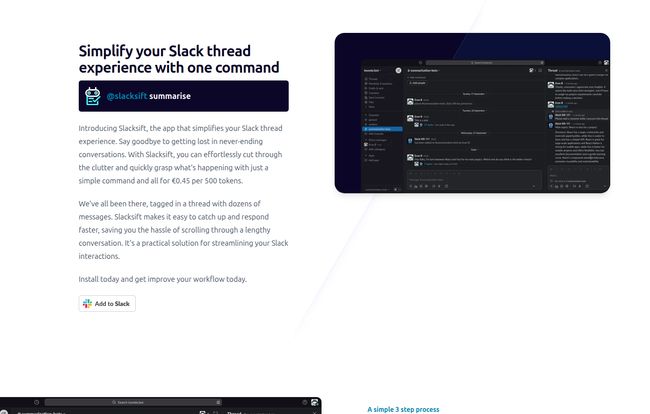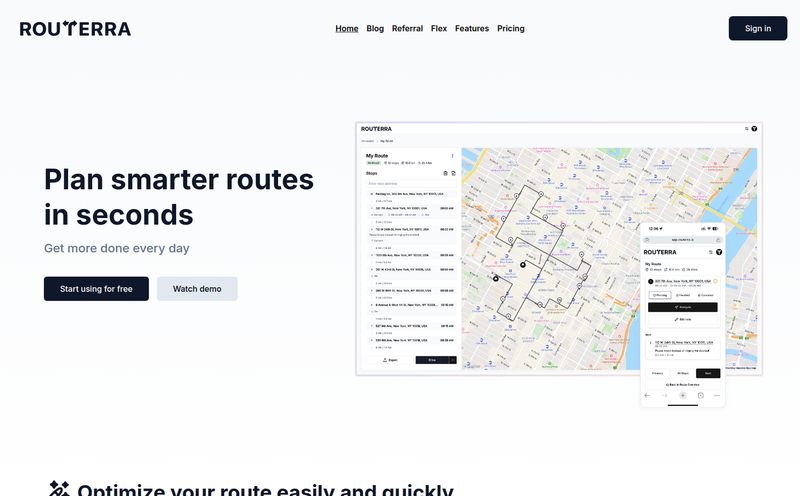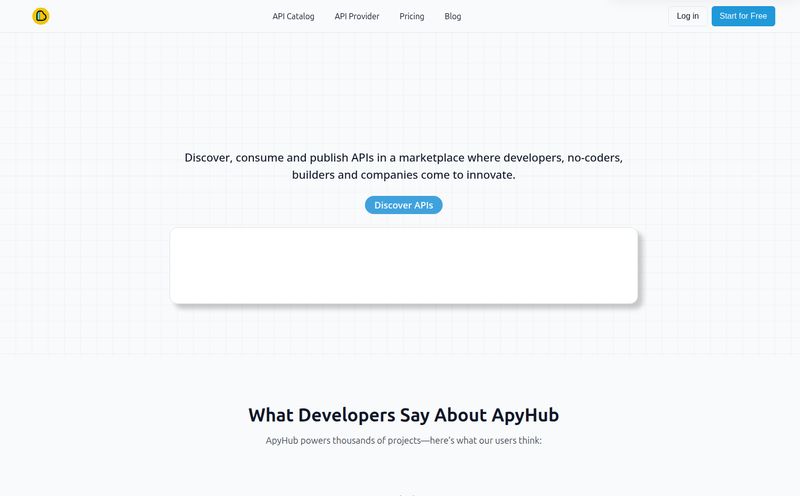You open Slack after a one-hour meeting, and you’re greeted by a thread in the #project-phoenix channel that has 78 new replies. Seventy. Eight.
Your soul visibly leaves your body. Your coffee suddenly tastes like despair. Somewhere in that tangled mess of notifications, GIFs, and side-conversations is a critical decision you need to be aware of. But finding it feels like an archaeological dig. You have to scroll, skim, and piece together a timeline, losing precious minutes and a good chunk of your sanity in the process. We’ve all been there. It's the modern workplace equivalent of being asked to “just hop on a quick call” at 4:59 PM on a Friday.
I’ve long believed that the biggest challenge of remote and hybrid work isn't the technology itself, but the communication overhead it creates. Slack was supposed to kill email, but sometimes it feels like it just created a faster, more chaotic monster. So when I stumble across a tool that promises to slay even a small part of that monster, my ears perk up. Enter Slacksift.
So, What on Earth is Slacksift?
Put simply, Slacksift is a life raft in the stormy sea of Slack threads. It's an app that integrates directly into your Slack workspace and does one thing, and one thing only: it summarizes long, convoluted threads for you. With a single command, it cuts through the noise and gives you the gist of the conversation. No more endless scrolling. No more reading every single “+1” or “lol” message to figure out what’s going on. It’s a beautifully simple solution to a maddeningly common problem.

Visit Slacksift
The whole idea is to get you up to speed in seconds, not minutes. Imagine being tagged in a thread that started hours ago. Instead of embarking on a reading quest, you just ask Slacksift to give you the rundown. That’s the dream, right?
How It Works: The Magic is in the Simplicity
This isn't some complex platform you need a two-hour onboarding session for. Honestly, the setup is so simple it's almost suspicious. Based on my run-through, it’s basically three steps:
- You add the Slacksift app to your Slack workspace. Standard stuff, takes a few clicks.
- You give it a little wave by typing @slacksift in any channel to get it warmed up.
- You find a thread that's giving you a headache, and you type the magic words: @slacksift summarise.
A moment later, the app replies in the thread with a concise summary of the conversation. It pulls out the key points, decisions, and action items, presenting them in a neat little package. It’s like having a personal assistant whose only job is to read your Slack messages for you. What a time to be alive.
My Honest Take on Using Slacksift
I’m naturally skeptical of new productivity tools. My computer is already a graveyard of apps that promised to change my life and are now just gathering digital dust. But Slacksift feels… different. It's not trying to be an all-in-one project management suite or a new social network. It’s a precision tool, a scalpel designed to fix one specific thing. And I respect that a lot.
The Good Stuff
The most obvious win is the time saved. I did a rough calculation on a few recent threads and figured I was saving anywhere from 5 to 15 minutes per big conversation. That adds up incredibly fast. It's not just about the raw time, either; it's about reducing the cognitive load. I can pop into a thread, get the summary, and contribute meaningfully without derailing my entire train of thought. This is a massive plus for anyone struggling with context switching.
The ease of use is another huge point in its favor. There’s no learning curve. If you can type a message in Slack, you can use Slacksift. Period.
The Not-So-Good Stuff
Okay, it can’t all be sunshine and roses. The first hurdle is that Slacksift isn't free. We’ll get to the pricing in a second, but it’s a paid tool. For some freelancers or smaller teams, any new expense is a tough sell.
The other major consideration is its dependency on Slack. This seems obvious, but it's worth stating. Slacksift is an add-on, not a standalone product. If your company decides to migrate to Microsoft Teams next year, well, your Slacksift investment goes poof. It lives and dies with your company's use of Slack. It’s a specialist, and specialists can become obsolete if the environment changes.
Let's Talk Money: The Slacksift Pricing Model
This is where things get interesting. Slacksift has thrown the typical SaaS subscription model out the window. There are no monthly tiers, no user limits, no “Pro” vs “Enterprise” nonsense. Instead, they’ve opted for a usage-based pricing model.
You pay €0.45 for every 500 tokens you use.
"So... what's a token?" I hear you ask. In the world of AI language models, a token is basically a piece of a word. A good rule of thumb is that 100 tokens is about 75 words. So, you’re paying for the amount of text you ask the AI to process.
This model is incredibly fair, in my opinion. If you have a quiet week with very few monster threads, you pay very little. If you're in the middle of a massive product launch with conversations flying everywhere, you pay more. You only pay for the value you're actually getting. For teams that have unpredictable workflows, this is so much better than a flat fee that you have to pay wether you use the service or not. They also offer a 14-day money-back guarantee, which is a nice touch of confidence.
| Feature | What You Get |
|---|---|
| Pricing | €0.45 per 500 tokens (Usage-based) |
| Billing Model | Pay-as-you-go |
| Users | Unlimited |
| Support | 48-hour response time |
| Guarantee | 14-day money-back guarantee |
Is Slacksift Worth It for Your Team?
So, the million-dollar—or rather, the €0.45-per-500-tokens—question. Is it worth it?
If you're a small team of 2-3 people with a very quiet Slack workspace, probably not. The pain point it solves might not be big enough to justify a new tool.
But if you are part of a medium-to-large team, especially a remote or distributed one, I think the answer is a resounding yes. Think about it. How much is an hour of your developer’s time worth? Or your project manager's? If Slacksift saves each person even a few hours a month, it pays for itself almost immediately. It’s a tool for organizations that understand that time is money, and mental focus is priceless.
It's for the teams that have those channels—you know the ones—that look more like a live-stream chat than a professional communication tool. Slacksift acts as a moderator, a librarian, and a personal assistant all rolled into one simple command.
Frequently Asked Questions about Slacksift
1. How secure is Slacksift with my company's data?
While the site doesn't go into deep technical specifics, any reputable Slack app has to adhere to Slack's security protocols. The tool only processes the text from the specific thread you ask it to summarize. It's always good practice to review the privacy policy, but for general project conversations, the risk should be minimal.
2. Can I set a budget for the token usage?
The current information doesn't specify budget caps. Given the pay-as-you-go model, you'd likely monitor usage through their billing system. This might be a feature they consider adding in the future if there's enough demand.
3. Is the summary always accurate?
AI summarization has gotten incredibly good, but it's not infallible. For 95% of business conversations, it will capture the essence perfectly. However, for highly nuanced, technical, or sensitive topics, you should still use the summary as a guide and then skim the original thread for the full context. Think of it as a super-powered TL;DR, not a legally binding document.
4. What happens if I use it and don't like it?
Slacksift offers a 14-day money-back guarantee. This allows you to try it out on your team's real-world conversations and see if it provides value. If not, you can get a refund, making it a pretty risk-free trial.
5. Do I need to be an admin to install Slacksift?
Typically, adding apps to a Slack workspace requires admin permissions. You'll likely need to ask your workspace administrator to install it for the team.
Final Thoughts on This Slack Superpower
Slacksift is a refreshing entry in the productivity space. It’s not trying to boil the ocean. It’s a sharp, focused tool that does its job without any fuss. It identifies a universal pain point—the absolute nightmare of chaotic Slack threads—and offers an elegant, simple solution.
The usage-based pricing is a bold and, in my view, very fair move that respects the customer. Will it single-handedly solve all of your company's communication problems? Of course not. But will it save you and your team a significant amount of time, frustration, and mental energy every single week? I’m willing to bet it will. And for that, it gets a solid recommendation from this jaded old blogger.



